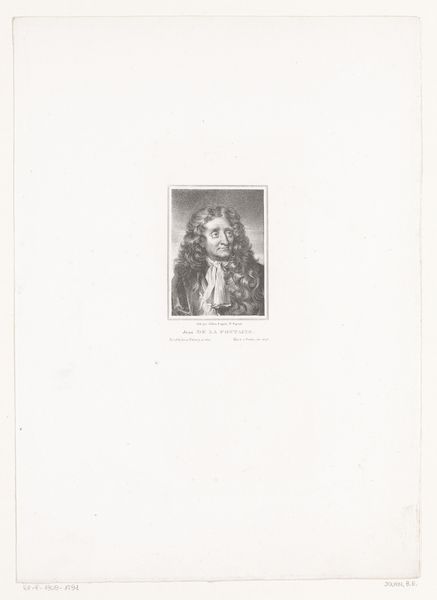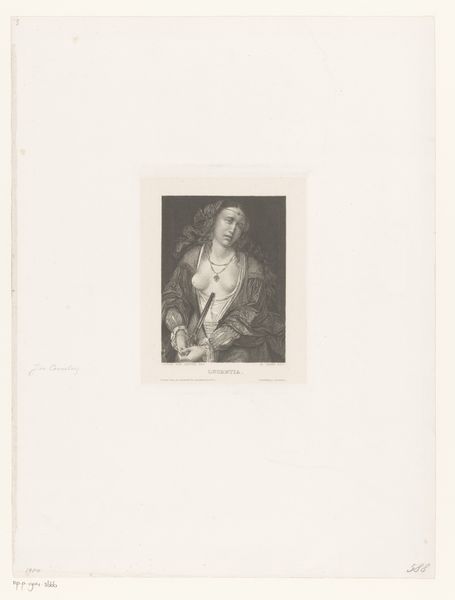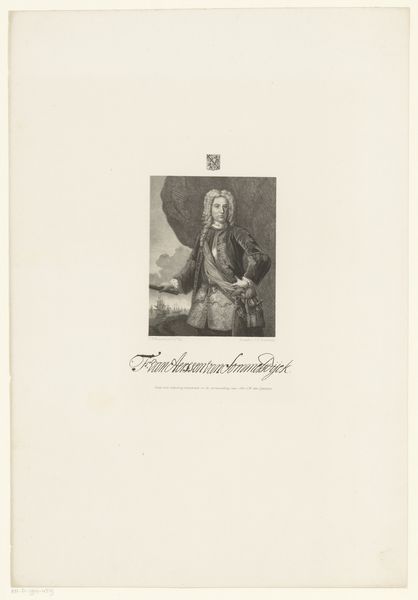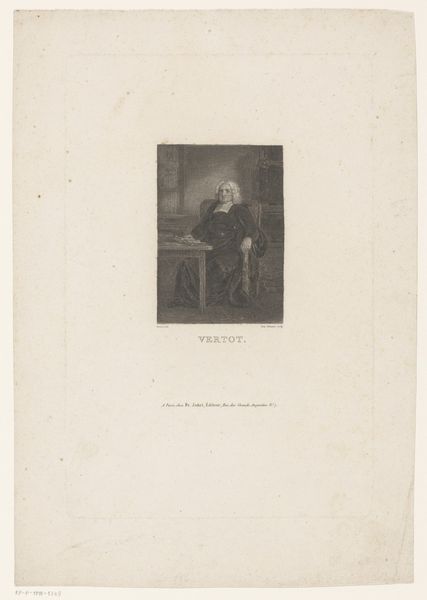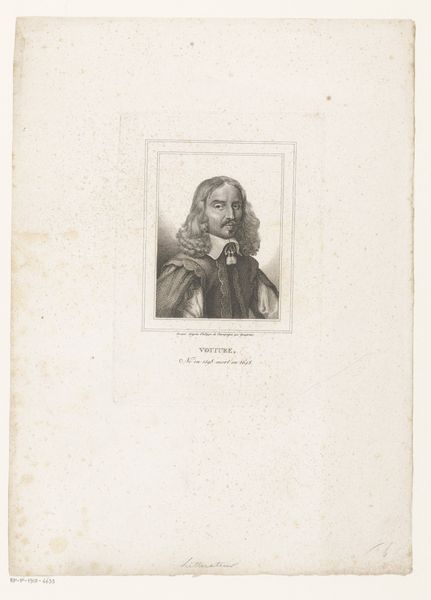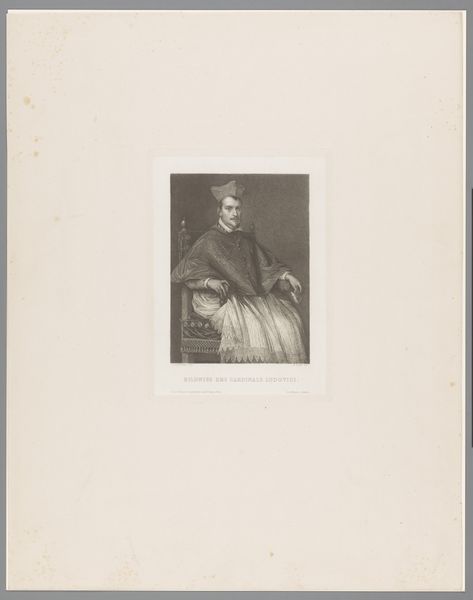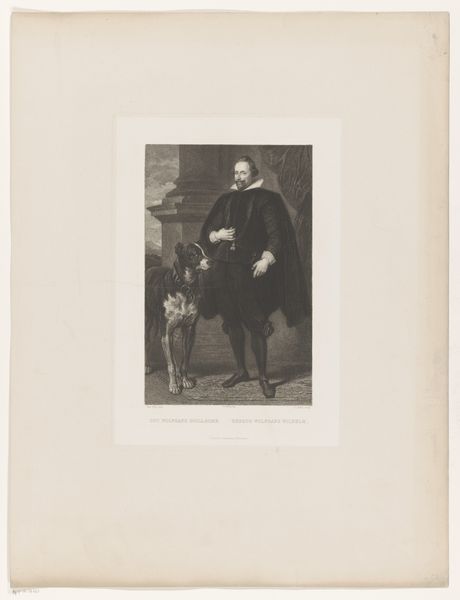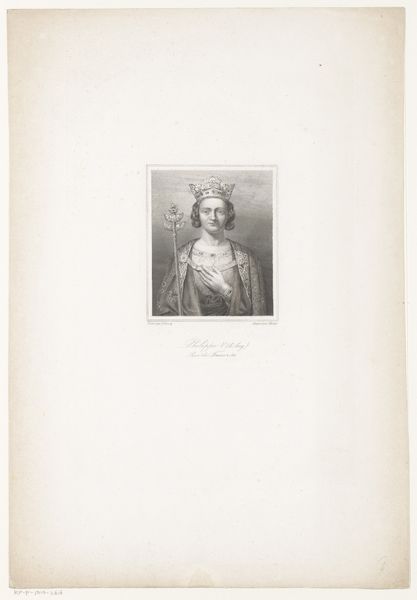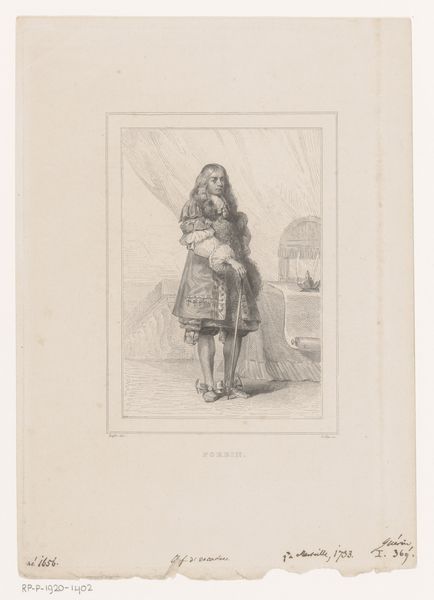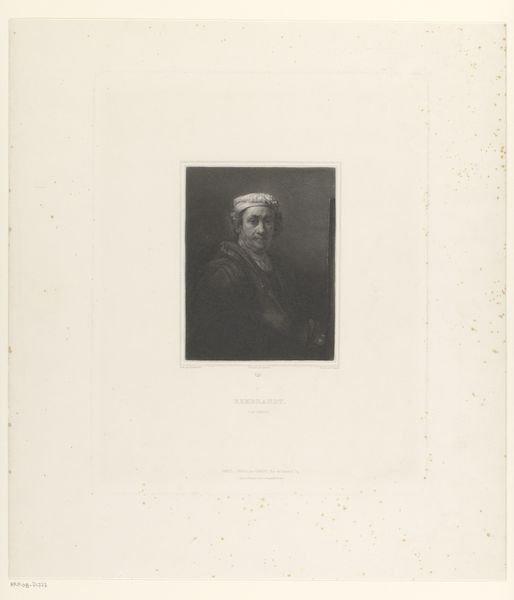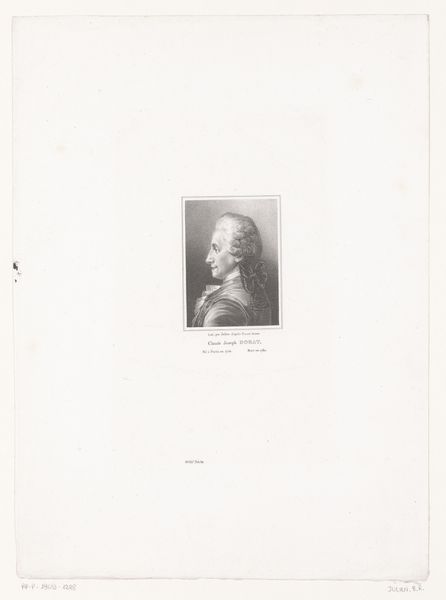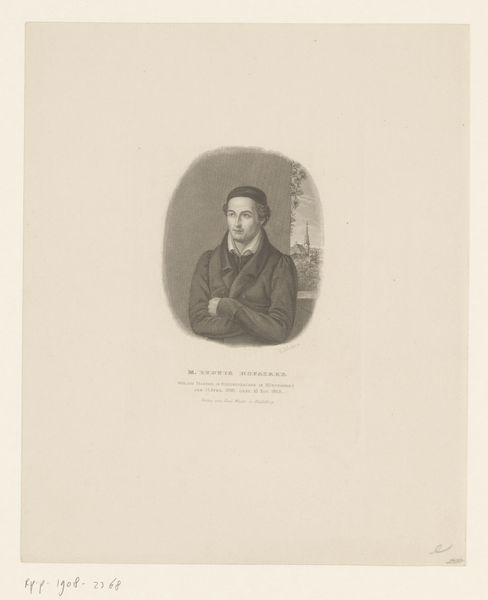
#
picture layout
#
photo restoration
#
light coloured
#
white palette
#
retro 'vintage design
#
archive photography
#
historical photography
#
digital photo altering
#
photo layout
#
repetition of white colour
Dimensions: height 250 mm, width 211 mm
Copyright: Rijks Museum: Open Domain
Curator: Looking at "Portret van Gideon de Wildt" created in 1866, at the Rijksmuseum. Editor: It has a rather formal air, almost theatrical. The man certainly appears self-assured. I am really curious, what's the history surrounding this piece? Curator: Frederik Hendrik Weissenbruch, the artist, likely wasn't depicting a contemporary figure. Gideon de Wildt was a prominent figure in the Dutch East India Company in the 17th century, and it is speculated that this portrait is derived "d’apres le tableau peint par Wornar Van Den Valckert 1637". We see reproduced at the botton an annotation about this. It gives the work a certain nostalgic quality. The process of its creation is also rather important. Editor: Could you elaborate on this? The medium, from a material perspective, strikes me as potentially mass-produced, thus undermining notions of artistic originality? Curator: Precisely! This isn't a unique painting. It’s a reproduction. Weissenbruch’s etching and the subsequent printmaking processes are essential to understand here. This artwork speaks volumes about the democratization of imagery. The very availability and consumption of it become part of the story. The print facilitates access for the rising middle class to acquire and display representations of wealth and prestige formerly reserved for elites. Editor: So the artwork becomes less about the depicted subject as such, and more about this new visual economy and circulation of ideas. Thinking about this distribution and reception… was there an intended political or social aim here? Curator: It taps into that 19th-century vogue for national history, particularly interest into the Dutch Golden Age, fueling narratives of national identity and past glories. We should ask to what ends are such figures from history presented for the contemporary viewers? Is it pure glorification, or more subtly weaving political agendas of its own? Editor: So it reflects a contemporary aspiration by the upper middle classes to assert social status through visual means but anchored within the Golden Age? I see the etching and its reproducibility challenge traditional art hierarchies through new labor and material arrangements of artwork. Fascinating. Curator: Exactly. It urges us to ask questions of art production in relationship to markets and shifting class dynamics, especially considering the socio-political factors surrounding it! Editor: Food for thought, indeed. The art market always leaves one feeling a little thoughtful.
Comments
No comments
Be the first to comment and join the conversation on the ultimate creative platform.
